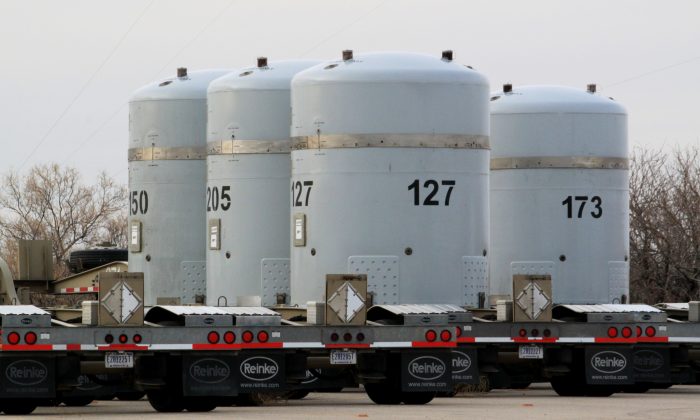The communications director at a recycling company emphasizes that ‘Used nuclear fuel is only waste if you waste it.’ Despite the increasing recognition of nuclear energy as a viable solution for low-carbon electricity in the United States, the nuclear power industry faces challenges in dealing with radioactive spent fuel. However, efforts to recycle nuclear waste in the country, previously hindered by legal and regulatory obstacles, could provide a solution if allowed to progress.
The nuclear power industry has been hindered for five decades by bureaucratic hurdles that have slowed the construction of new plants in the U.S. Due to public fears following incidents like Chernobyl, Three Mile Island, and Fukushima, as well as worries about the toxicity of used nuclear fuel and its potential use in weapons, progress in the industry has been limited.
Recently, there has been bipartisan support for nuclear power, with environmentalists now viewing it as a clean energy source alongside wind and solar. However, reviving the dormant nuclear power industry in the U.S. remains a challenge.
Efforts to expand nuclear energy face obstacles such as regulatory approvals, permits, capital raising, and the need for a reliable supply of fuel. Additionally, the safe disposal of spent fuel remains a concern for utilities.
Since 1992, the U.S. has relied on imports for most of the uranium needed for its nuclear industry. The remaining spent fuel, totaling over 85,000 metric tons, is stored in dry containers on-site at nuclear power plants.
Efforts to build a permanent repository for nuclear waste, such as Yucca Mountain in Nevada, have faced funding challenges. The U.S. Department of Energy is responsible for disposing of nuclear waste, but the task has been left to electric utilities while awaiting the construction of storage sites.
The volume of spent nuclear fuel continues to increase each year in temporary storage, prompting utilities to take legal action against the government. Solving the waste problem is crucial for the growth of the nuclear power industry, as utilities are hesitant to order new reactors without a solution in place. Services and technologies are needed to address the challenges faced by utilities in managing nuclear waste. “They need the reactor, they need the fuel, and they also need the waste management.” -> The reactor, fuel, and waste management are all necessary components. The 4 percent of remaining radioactive material is sealed in glass and placed in metal containers for approximately 300 years until it reaches the original low-level of radioactivity of the uranium initially mined. This is a significant improvement compared to the current storage periods for non-recycled UNF, which range between 10,000s and 100,000s of years. Orano is actively working to find uses for some of this residual 4 percent, which includes valuable materials like krypton-85, strontium-90, americium-241, rare-earth, and lanthanide elements.
Despite the progress being made in nuclear recycling, there are still hurdles to overcome in America. While federal grants and private financing have been increasing, the industry is heavily influenced by technological advancements, supply and demand for nuclear fuel, and government policy. The Nuclear Regulatory Commission has identified gaps in its regulations for reprocessing, which have not been completely resolved yet.
In addition to regulatory challenges, U.S. laws also pose obstacles to nuclear recycling efforts. Changing the Nuclear Waste Policy Act would require bipartisan support, which has only recently gained momentum in the past few years. However, there is hope that proof of concept on existing nuclear waste can be demonstrated by the end of next year, paving the way for commercial nuclear recycling at scale within the next decade.
Source link





